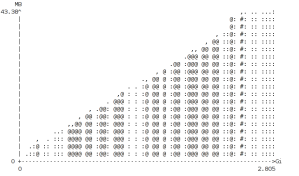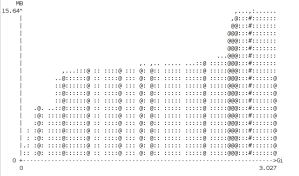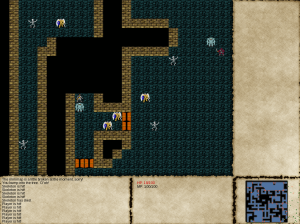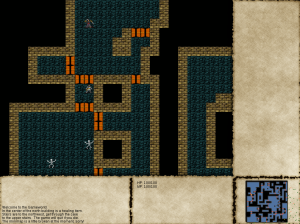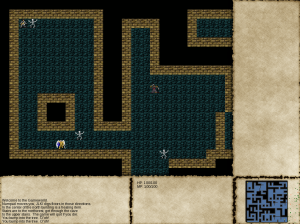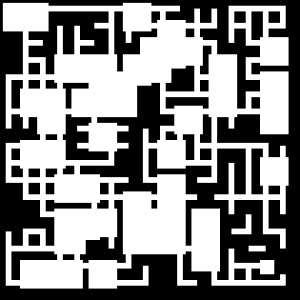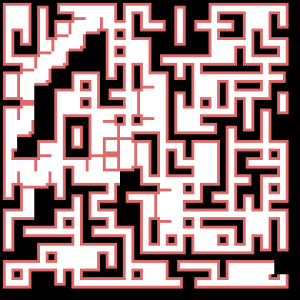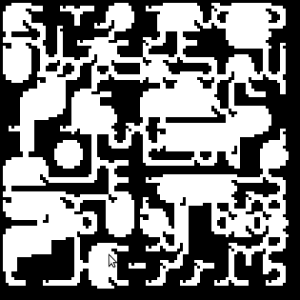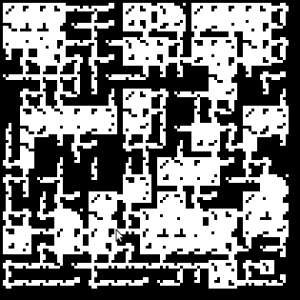The overall system of the game is going to be built roughly similar to the pygame version. However, with switching to a language where memory is actually important, managing a dynamic number of entities requires managing a dynamic chunk of memory. Not having linux/being too lazy at the moment to get a linux worksetup going means I dont have valgrind to profile the memory usage either. 😦
Ah well, at the moment, a basic linked list is in place for entity management. Put simply, the plan is that anything declared to be “on screen” or, very close to the screen (within a z level, or two adjacent maps, X number of tiles away from the border, what have you) will be processed using this list.
You can find plenty of linked list tutorials out there, so I won’t go into too much detail, but put simply a linked list is a list (or array) of objects/items that are linked via pointers. To iterate through them, you can simply make a pointer (called ptr), and traverse through the list by setting ptr equal to some root or head node, and then repeatedly calling ptr = ptr->next, where “next” is itself a pointer to the next item in the list.
Pointers (and linked lists…or some form thereof) are necessary because arrays require you to know how many elements you want. With a list and dynamic memory, you can (efficiently) make an arbitrarily sized array, at the cost of some mental complexity in juggling around pointers.
On the actual game end, I’ll end up using this list to handle entity processing, as already said. For each entity determined to be on screen, change their location according to their AI package.
In addition to this, I want to add in some basic collision detection – which is tricky. Currently “collision” is handled via checking the heightmap, but that’s obviously not going to work when you’re wandering around a city.
I could have another 2d array that is populated with ints corresponding to tiles (and collision information by extension), like the pygame project had. But, I could make perhaps a 2d array of pointers, each of those pointing to a linked list representing everything on that tile.
Even when I get collision in, eventually I’m going to have a dynamic array of monster-entities floating around the map, item-entities taking up cells, and tiletype definitions. Having multiple arrays for each would be aggravating, but so might be juggling around pointers to handle movement… Pointers seem like the most logical solution, though.
Game design itself is going to be rewritten away from fantasy, at least for now. Zombies might be quicker to implement. But I’m still just getting the ‘machine’ itself running, so I dont have to worry about that too much at the moment.

